Bundesliga MD 17 preview: Bayern against Wolfsburg
26 games, 24 defeats, 2 draws – that is Wolfsburg’s horrible record against the record champions. 17 goals for and 76 goals against speak a clear language. In recent years, for Wolfsburg to concede five or six goals in this fixture has been nothing out of the ordinary.
However, one of the two draws was a 2-2 away at the Allianz Arena in 2017. Right now, Wolfsburg’s defense seems to be the strongest it has been in years. Under new coach Oliver Glasner, they conceded only 16 goals (first rank in the Bundesliga). Other statistics support the view that this has not been a fluke: Only 16 expected goals against (xGa) is the league’s best value and 11.3 shots conceded puts them in third in this particular category.
Yet even during their strongest phase they have not been able to to climb to the top of the table despite their defensive qualities. They are not threatening enough going forward to be able to have done that. A record of 18 goals (joint second last with Cologne and Paderborn), 13.8 shots per game (8th place), and 21 expected goals (xG) (10th place) is average at best. The only real offensive threat comes from Wout Weghorst, who has already scored 11 times and made 3 assists in 23 games so far this season.
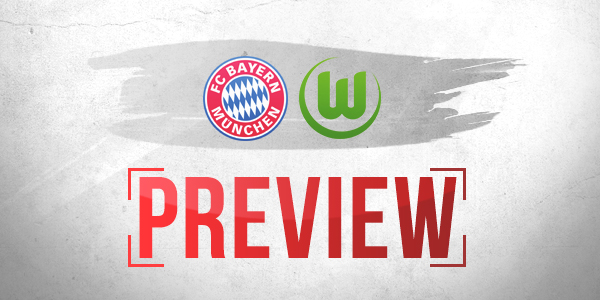
VfL Wolfsburg: being aggressive and threatening in transition
This follows upon a season where Wolfsburg was able to create a decent goal threat. 62 goals in total (6th place) equating 1.82 goals per game (currently 1.13) was a presentable number last term. But Glasner’s focus is on defense.
Initially, this approach was very successful. After all, one goal a game is enough if the opponent does not score at all. In all competitions, Wolfsburg has won 1-0 four times already. But they have also had six 1-1 draws. This makes them Bundesliga leaders in terms of the number of draws alongside Dortmund, who have also had six draws so far.
Glasner announced before the beginning of the season that there would not be a characteristic “Glasner football” at Wolfsburg. But his handwriting is clear to see. It is not a top priority for Wolfsburg to keep the ball in their own ranks anymore. They also take greater risks with their passing – 75% pass completion is the third-worst figure in the league. Much of Wolfsburg’s success depends on their quality in gegenpressing.
Problems in a 5-2-3 / 3-4-3 formation
Wolfsburg often looks for a long ball up front to get the ball into areas where their offense is well positioned to attack their opponents. If no such situation exists, they often circulate the ball around in their own defense until there is a propitious opportunity for the long ball up. Wolfsburg has 68 long passes (low and high) per game on average.
Nevertheless, this strategy appeared to have become increasingly questionable between the 1-1 draw against Leipzig in October and the 2-0 victory against Frankfurt towards the end of November. So Glasner has reacted and made some adjustments in recent weeks.
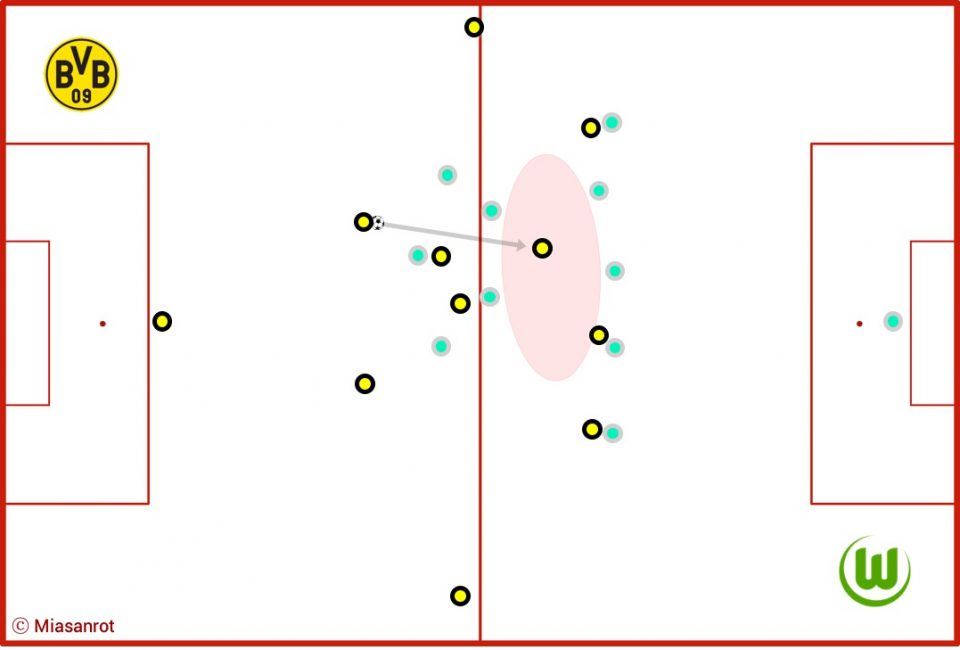
Until the 0-1 defeat against Freiburg in early December, Glasner had preferred a back three / five. They mostly adopted a 5-4-1 formation against the ball. The major drawback of this team in this formation was its lack of vertical compactness. The three center-backs and the two holding midfielders did not properly harmonize and often failed to keep a compact shape, which resulted in situations like the one depicted above. There was too big a gap between the back five and the other more offensive five outfield players.
Switch to a 4-1-4-1
In the last three games, Glasner switched to a 4-1-4-1. In this formation, his team won first 1-0 against St. Étienne in the Europa League, then 2-1 against leaders Gladbach, and finally got a 1-1 draw against in-form Schalke.
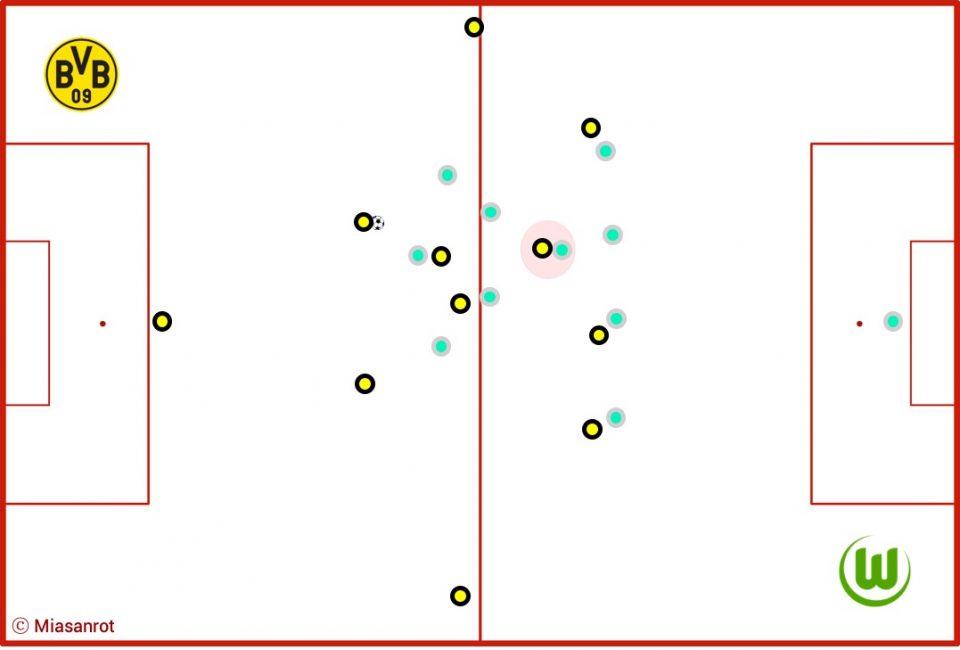
If one hypothetically assumes that Wolfsburg had already used their current 4-1-4-1 formation in the game against Dortmund, the advantages of Glasner’s switch become immediately apparent. One more available player in midfield helps to cover the space between the lines more evenly. There is less need for the defenders to push up to fill occuring gaps, and the two offensive midfielders can focus more on what is happening in front of them.
But the same as with all other formations, the upsides come at the cost of certain downsides as well. The most obvious one is that there is less width in defense. And there is the risk of coordination problems between the two number eights and the holding midfielder. As a consequence, sudden opportunities sometimes arise for the opponent. Consider once more the adapted situation from the Dortmund match:
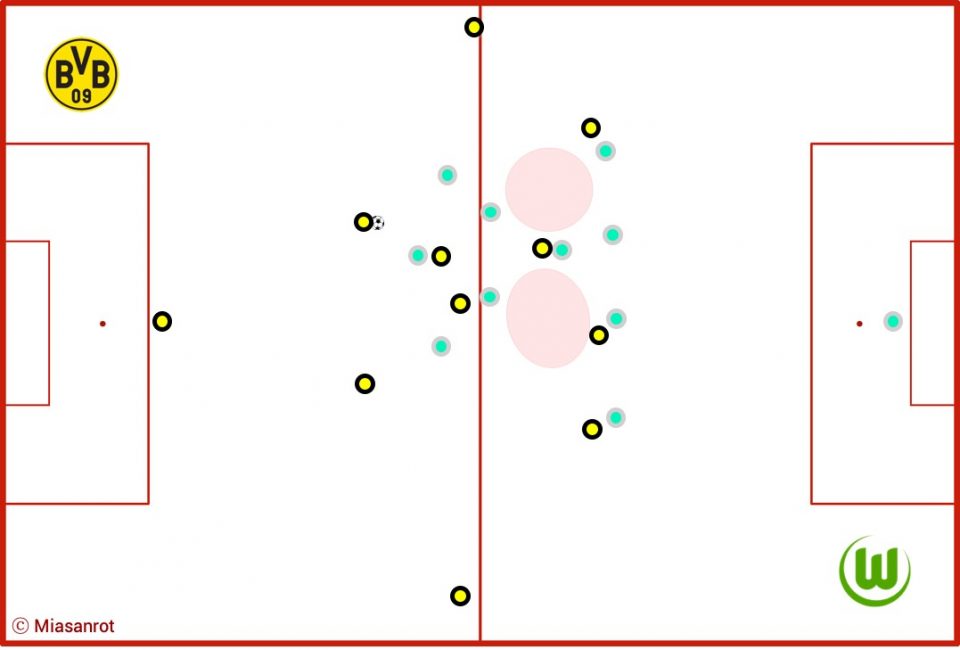
Potential options for Bayern in possession
It is precisely these areas where Wolfsburg has continued to be vulnerable despite their recent gain in stability: Their lack of vertical compactness has remained an issue that the switch in formation has not done away with. When Bayern are in possession, it will be upon them to draw Wolfsburg’s two number eights out of position in pressing to get free access to the open spaces left and right of the holding midfielder. The diagonal give and go passing Bayern used in the game against Freiburg seems like a useful means to achieve this. Another option is the involvement of the technicality skilled full-backs:
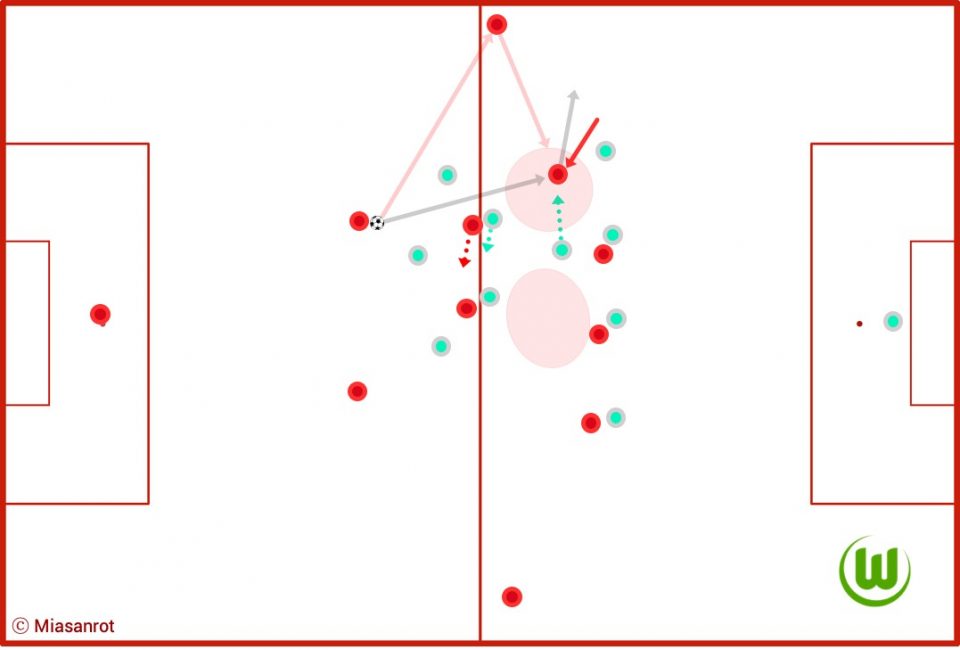
If the two wingers shift inside and one of the number eights pushes up, all four Wolfsburg defenders are marked. Whether there is a space between the lines opening up for Bayern in such situations depends on the swiftness of their movements as well as the positioning of Wolfsburg’s holding midfielder. If Alaba with his passing skills is involved, the chances of this succeeding are definitely improved.
Wolfsburg is not as consistently reliable in organising their marking as the few goals scored against them suggest. So if Bayern are to somehow penetrate Wolfsburg generally well-organised defense, it will probably come about by drawing their front line out of position and then playing through the arising gaps. A favourable positioning of their two quick full-backs Davies and Gnabry would be an important antecedent for this.
Wolfsburg in possession of the ball: Short dribbles and overloads
In possession, Wolfsburg becomes dangerous especially as a result of the flexible diamonds they form on the wings. On the left wing especially, different patterns have emerged in the last three games. Xaver Schlager often switches his position with the left winger, usually Josip Brekalo or Joāo Victor, so that both of them sometimes appear in a more central position to open up the left flank for the advancing left-back, usually Jérôme Roussillon or Paulo Otávio. Moreover, Wolfsburg works a lot with overloads on the wings, which can, however, backfire when they turn the ball over.
The center-backs are usually responsible for initiating Wolfsburg’s build-up play. Often, the ball is played to one of the full-backs first and then moved on diagonally to one of the number eights. Schlager commonly has been at the center of this. Things tend to become dangerous for Bayern when their full-backs fail to challenge their opponents, thus enabling Wolfsburg to effectively use the resulting open spaces. Precisely how not to do it Flick’s team demonstrated in impressive fashion around the time of Freiburg’s equalizer.
Wolfsburg are not quite as apt at their combinational play as Freiburg, especially in tight spaces, but they are better skilled at dribbling, especially in the form of Schlager, Brekalo, Victor, Otávio and also Kevin Mbabu, the right-back. Schlager and Maxi Arnold also often make themselves available in the half-spaces for a pass so that the wingers and full-backs are not forced to stick to the sidelines. Bayern have to find a key to solve this challenge. To disrupt Wolfsburg early on by trying to isolate the holding midfielder could be a good approach. Wolfsburg’s two number eights are usually positioned very high up the pitch, so a concerted pressing in the center would be a logical plan of attack.
Leaving everything on the pitch
Wolfsburg’s offensive firepower may have been jammed at times. But even though they have scored rather few goals, they can mount a threat, especially in transition. Bayern also have an obvious fitness problem. The squad has already been very thin, and with Thiago now missing as well, it is short another player who would have arguably been a key presence in midfield to counter the strong central midfield of the visitors.
Perhaps Leon Goretzka and/or Corentin Tolisso will be ruled fit in time for the game. Another big question is whether Joshua Kimmich will reprise his role in midfield. Flick would run the risk of a lack of pace in central defense, but he also needs a pivot in midfield to direct and organise the game.
No matter what he decides, his will be a makeshift solution. Wolfsburg will make the trip to Munich with the self-confidence that their recent run of good results undoubtedly has lent them. The record champions must mobilise their last bits of strength and seize control of the game right from the start. But the longer Wolfsburg’s compact defense can shut out Bayern’s offense, the more the game will become a test of Bayern’s tenacity and resolve. There is much to suggest that the game will be long, complicated and difficult. There is no question, however, that Bayern can only speak of a reasonably merry and quiet Christmas if they take all three points from the game. For days like this, the phrase “leaving everything on the pitch” was probably invented.





